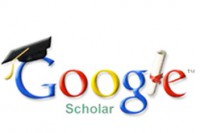Oral Assessments at English Education Department of Universitas Muhammadiyah Yogyakarta
DOI:
https://doi.org/10.18196/ftl.114Keywords:
Keywords, oral assessments, speaking, advantages, disadvantagesAbstract
Various types of oral assessments such as interviews, presentations and group discussions have commonly been applied at English Education Department of Universitas Muhammadiyah Yogyakarta (EED UMY) to measure students’ speaking ability. This research aims to identify both advantages and disadvantages found in the oral assessments applied at EED UMY based on students’ perspec- tives. The data were collected using in-depth interviews to six EED UMY students who had taken speaking classes for two semesters. They were interviewed to explore their perception on the advan- tages and disadvantages of the oral assessments they had taken. The findings of this research show that the participants perceived that the oral assessments motivated the students to speak, provided direct feedback, improved students’ speaking ability, developed students’ communication skills, increased students’ self-confidence, and enabled students to share ideas. On the other hand, in addition to insufficient time allocation, the participants also revealed that increased nervousness frequently occurred during oral assessments.
References
Al-Amri, M. N., & Yanbu. (2010). Direct spoken English testing is still a real challenge to be worth bothering about. English Langauge Teaching , 3 (1), 113-117.
Baturay, M. H., Tokmak, H. S., Dogusoy, B., & Daloglu, A. (2011). The impact of task type on oral performance of English language preparatory school students. H.U. Journal of Education , 41, 60-69.
Briggs, M., Woodfield, A., Martin, C., & Swatton, P. (2008). Assessment for learning and teaching in primary school (2 ed.). United Kingdom: Learning Matters Ltd.
Creswell, J. W. (2012). Educational research : Planning, conducting, and evaluating quantitative and qualitative research (4 ed.). Boston: Pearson Education, Inc.
Davis, M. H., & Karunathilake, I. (2005). The place of the oral examination in today's assessment systems. Medical Teacher, 27 (4), 294-297.
Dorman, J. (Ed.). (2001). Oral language assessment in the foreign language class (planning, conducting, managing). North Caroline State : ERIC.
Gent, I., Johston, B., & Prosser, P. (1999). Thinking on your feet in undergraduate computer science: A constructivist developing and assessing critical thinking approach. Teaching in Higher Education , 512-522.
Huxman, M., Campbell, F., & Westwood, J. (2012). Oral versus written assessment: A test of student performance and atitudes. Assessment and Evaluation in Higher Education, 37 (1), 125-136.
Iafc. (2011). Fire service intructor: Principles and practice. Canada: Jones and Bartlett Publisher.
Joughin, G. (2003). Oral assessment from the learner's perspective: The experience of oral assessment in post-compulsory Education. Thesis.
Joughin, G. (2010). A short guide to oral assessment. University of Wollongong , 1-23.
Nakamura, Y., & Valens, M. (2001). Teaching and testing oral communication skills. Journal of Humanities and Natural Sciences , n111, 43-53.
Nitko, A.J., & Brookhart, S.M. (2012). Educational assessment of students. New Jersey:
Prentice Hall
Nunan, D. (1999). Second language teaching and learning. Boston: Heinle and Heinle Publishers.
Purwanto, N. (2013). Prinsip-prinsip dan teknik evaluasi pengajaran (18 ed.). Bandung: PT. Remaja Rosdakarya.
Richard, J. C. (2008). Teaching listening and speaking: From theory to practice. Cambridge: Cambridge Press University.
Tomei, J. (1998). Oral profieciency test in the English speaking sourse in Hokkaido University. Journal of Higher Education, Hokkaido University (3), 162-166.
Williams, K. C., & Williams, C. C. (2011). Five key ingredients for improving student motivation. Research in Higher Education Journal , 11, 1-23.
Wisker, G. (2004). Developing and assessing students’ oral skills. Birmingham: Staff Education and Developments Association.
Downloads
Published
How to Cite
Issue
Section
License
Copyright
Authors retain copyright and grant the journal right of first publication with the work simultaneously licensed under a Creative Commons Attribution-ShareAlike 4.0 International License that allows others to share the work with an acknowledgment of initial publication in this journal.
Authors are permitted and encouraged to post their work online (e.g., in institutional repositories, social media account, or on their website) after the article getting published in the journal, as it can lead to productive exchanges and earlier and greater citation of published work (See The Effect of Open Access).License
You are free to:
- Share — copy and redistribute the material in any medium or format
- Adapt — remix, transform, and build upon the material for any purpose, even commercially.
Attribution — You must give appropriate credit, provide a link to the license, and indicate if changes were made. You may do so in any reasonable manner, but not in any way that suggests the licensor endorses you or your use.
ShareAlike — If you remix, transform, or build upon the material, you must distribute your contributions under the same license as the original.
- No additional restrictions — You may not apply legal terms or technological measures that legally restrict others from doing anything the license permits.


.png)





